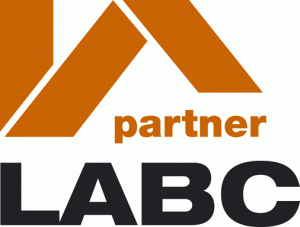| the Christopher Huntpractice architectural and building design for residential development |
|
Site
Menu
 |
|
|
How to view a current
Planning application. Most Councils are very keen to have public access to their records. Online Planning applications for public viewing is a great example of what can be achieved if Central Government chooses to wave its big waggy stick. HOW DO I VIEW PLANNING AUTHORITY DOCUMENTS?
Many Local Councils now have public access and application inspection routes via the Councils Web Site and more councils are coming on line every week with this great service. Ask your own council if the have this facility. Local Councils main legal obligations are: General (a) Local Government Act 1972 (as amended) This gives the public the right to inspect and copy the following documents:- the agenda for a Council committee or sub-committee meeting; reports for the public part of the meeting; the minutes of such meetings; any background papers, including planning applications, used in preparing reports. These documents can be inspected and copied from three clear days before a meeting. There is no charge to inspect a document but Councils will charge for making photocopies. (b) Copyright Design and Patent's Act 1988 This allows the copying of material that is required to be held on a public register. Copyright is not infringed providing that certain conditions are met. The effect is to allow planning information to be inspected at a more convenient time and place than would otherwise be the case. Councils will make a charge for any copies made. Planning Control (a) Buildings of special architectural and historic interest and conservation areas. Under the terms of the Planning (Listed Buildings and Conservation Areas) Act 1990, local Councils must maintains a list of buildings within their Boroughs, which have been classified as being of special architectural or historic interest. Councils also keep maps showing which properties are within conservation areas. (b) Advertisements In accordance with the Town and Country Planning (Control of Advertisements) Regulations 1992, Councils need to maintain a publicly available register of applications and decisions for consent to display advertisements. (c) Council's own development The Local Government (Access to Information) (Variation) Order 1992 ensures that information relating to proposed development by Councils cannot be treated as exempt when the planning decision is made. (d) Development Control Every Council must keep the following registers available for public inspection in accordance with the Town and Country Planning (General Development Procedure Order 1995: planning applications, including accompanying plans and drawings; applications for a Certificate of Lawfulness of existing or proposed use or development; Enforcement Notices and any related Stop Notices All applications for planning permission must receive publicity. Please contact to receive a copy of the Council's guidance note on 'Publicity for Planning Applications'. What additional information is available? Notwithstanding the legal requirement to make the planning register available for public inspection, Councils normally believe that it would help the public if they had access to all the relevant information, including any letters of objection/support for an application or correspondence about considerations which are material to the application. Therefore from three clear days before any committee meeting, the file will normally be made available for public inspection and the file will remain available for public inspection after the committee meeting. Although commercial confidentiality may be a valid issue, the Council will not use it unreasonably to prevent important information which is material being placed in the public domain.
|
Christopher Hunt MCIAT is not an Architect or a member of the RIBA but a Chartered Architectural Technologist - a professional building designer specialising in residential development from home extensions to new builds including conversions and refurbishments. He is a full member of CIAT which is a different and alternative qualifying body for professionals dealing with building design. If you specifically want an Architect click this link Home page About us Previous schemes gallery Client guides Client options after approval Construction News CIAT News Resources Home Building Contact Us Site Map |
|
|
|
|
Client Area:- Visit our Social Network Pages |
|
|
Work Areas
Residential development for household extensions, conversions and new dwellings. Measured surveys and roof inspection reports. Drawing plans on cad and specifications for planning permission, planning consent, planning approval, local authority approvals, building surveys and party wall act. Chartered Architectural Technologists belong to CIAT (the Chartered institute of Architectural Technologists). Key search phrases include - building designers, extend your home, extension guide, permitted development, planning advice, planning guide, planning gain. |
|
|
Article of the month:- Home building design ideas....
|
This page last updated:
© Copyright Christopher Hunt 2014. All Rights
Reserved.
|


 Local Councils recognise that planning serves the public interest and that planning
decisions affect everyone. In making decisions Councils take account of views from the public and believe that
the essence of an effective planning service is that people are encouraged and enabled to participate.
This guidance note describes what information is available from local Councils, in what form, where and
when it can be obtained and if you will be expected to pay for this information.
Local Councils recognise that planning serves the public interest and that planning
decisions affect everyone. In making decisions Councils take account of views from the public and believe that
the essence of an effective planning service is that people are encouraged and enabled to participate.
This guidance note describes what information is available from local Councils, in what form, where and
when it can be obtained and if you will be expected to pay for this information.





